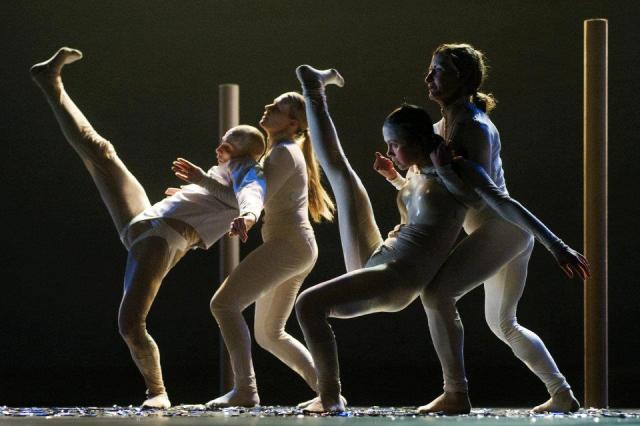
Dita Egl?te
As opposed to the personal stories by Danish artists Tatiana’s Baganova’s dance theater „Provincial dances” in their works „Svadebka” and „Sleeping beauty” look at the eternal themes in much more abstract categories. The movement score created by the choreographer is implemented almost perfectly; faultless is also the visual design (including lighting) of both productions. In „Svadebka” nude and well-trained male torsos provoke associations with Vitjuk’s theater, but the accents of red color and waving voluminous male costumes can be associated with Japan. However even the larger power of the atmosphere while performing Igor Stravinsky’s music, is created by the live presence of musicians and State Choir „Vilnius”. A lot of energetic movements in contrast to toddling with tensed upper body, synchronous dance by ensemble and separate solo episodes for the main „wedding people”, some small details (candles, ritual washing etc.)… However everything seems too self-sufficient, too symbolic and too abstract to accept that this large „noise” has anything to do with my world.
In the similar darkness of unconsciousness also the characters of „Sleeping beauty” fight. As an original motive I see the transformations of the fairytale’s court people into sex-less and without-own-will swordsmen. Also in this performance dancers/people are without faces (faces are hidden behind the fabrics, make up or masks of swordsmen), on the contrary pretty buts of the men are seen well (bandages on the top of nude colored tricot). Half-shade, nervous atmosphere with everlasting dancers movements between wings and dressed in grey (other dancers were dressed in white) comparatively little corpulent long haired dancer – all of that shows the bewitched fairytale forest as terrible nightmare. I can imagine well that what is seen on stage is really something the sleeping beauty experiences. However only during the second half of the performance, when one of the dancers in mocking and grotesque intonation starts to tell the story, I remember that the story is about the princess.
Also this show is full of different details and surreal attributes. If the constructions of squirrels wheel or windmill get involved in stage action for several times and the princess gets locked in it, then the tower pushed out in the front of the stage after a short while is pushed back. At the background as a good effect „rain” rains for several times. Scary destiny seems to be encoded in the idea to give all the authority to the evil witch Karabos. She, while hiding in futuristic fence-dress, during the end scene drops down white surrender cloth, but it doesn’t give any hopes of the brighter chances for the future.